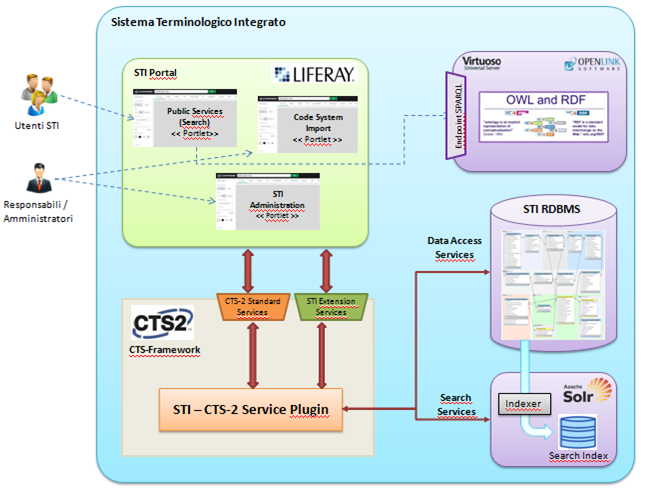STI (Servizio Terminologico Integrato)
This repository is meant to be the starting point to the whole STI app. This project is composed of 3 main parts:
- CTS2-FRAMEWORK subdirectory is the merge of two forks of the same original repository cts2/cts2-framework. The two forks are iit-rende/sti-cts2-framework and lexevs/cts2-framework. The original repo is a development framework, which allows to implement applications compliant to Common-Terminology-Service-2 functional standard.
- STI-SERVICE is a plugin for the OSGI framework CTS2. The code for this subproject is available at iit-rende/sti-service.
- STI-CTS2-PORTLETS is a repository containing two portlets (compatible with liferay portal) which are used to communicate with STI-SERVICE plugin. The code is available at iit-rende/sti-cts2-portlets-build
Detailed informations about this project and its dependencies are available here.
As explained in italia/publiccode.yml-docs this is what the file is meant for:
Many great software projects are developed by public administrations, however reuse of these projects is very limited. Some of the reasons for low uptake of such projects is a lack of discoverability and that it is hard to find out what project can actually work in the context of a different public administration.
The
publiccode.ymlfile is meant to solve all those problems. As such, it is an easily readable file for civil servants that are trying to figure out whether a project will work for them, and easily readable for computers as well. It contains information such as:
- the title and description of the project or product in English and/or other languages;
- the development status, e.g.
concept,development,beta,stable,obsolete;- which organisation developed the project;
- who is caring for the maintenance and when this expires;
- who to contact for technical or support inquiries;
- what national and local legal frameworks this project or product is designed for;
- what software dependencies this project or product has.
The
publiccode.ymlfile format should both be able to easily be added to any new project, as well as grow with the project as it expands beyond the original context it was developed in.
